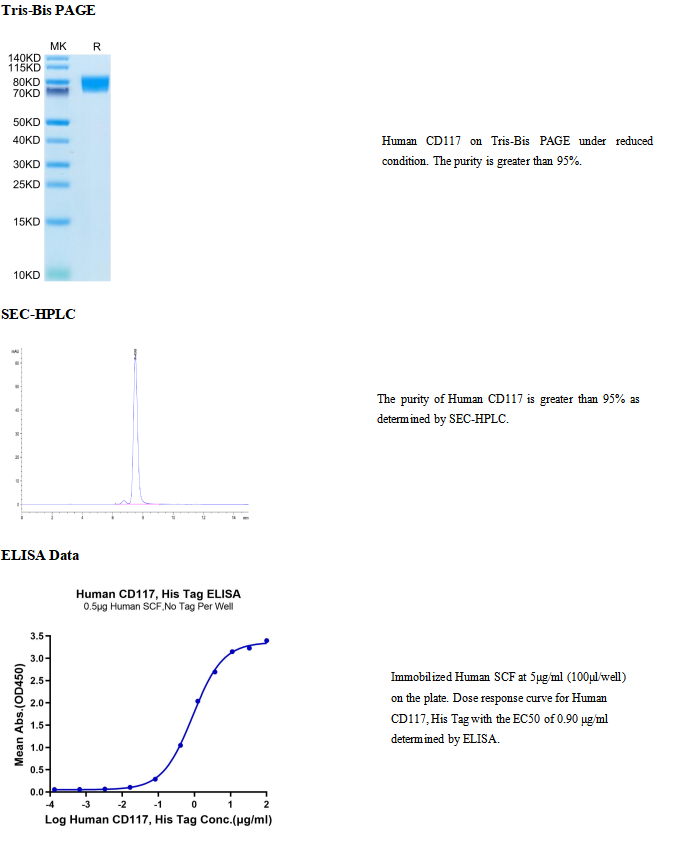Stem Cell Factor Receptor (SCF R), also known as c-Kit and CD117, is a widely expressed 145 kDa receptor tyrosine kinase. It is the cellular homolog of the feline sarcoma virus protein, v-Kit. Binding of SCF R to SCF, also known as Steel Factor and Kit Ligand, promotes the survival, differentiation, and mobilization of progenitor cells in multiple lineages. Mutations or deletions of SCF R cause a wide variety of malignancies as well as pigmentation disorders and sterility. Mature human SCF R consists of a 499 amino acid (aa) extracellular domain (ECD) with five tandem immunoglobulin-like domains, a 21 aa transmembrane segment, and a 431 aa cytoplasmic domain with the split tyrosine kinase domain. Within the ECD, human SCF R shares 73% and 76% aa sequence identity with mouse and rat SCF R, respectively. Alternative splicing of human SCF R generates a potentially secreted isoform that corresponds to the first four Ig-like domains. SCF is expressed as transmembrane and soluble noncovalent homodimers. One SCF dimer binds to two molecules of SCF R, inducing receptor dimerization and activation. Transmembrane SCF induces more prolonged signaling through SCF R compared to soluble SCF. Rat SCF is active on mouse and human cells, but human SCF is only weakly active on mouse cells. A 100 kDa glycosylated ECD fragment of SCF R can be shed into the circulation by TACE/ADAM17, and this fragment inhibits the interaction of SCF with transmembrane SCF R. SCF is a primary growth and activation factor for mast cells and eosinophils. SCF R expression on mast cells enables them to infiltrate SCF-secreting tumors where they promote tumor growth and induce local immune suppression. SCF R is up‑regulated on dendritic cells by Th2- or Th17-biasing stimuli, and it is required for subsequent dendritic cell induction of Th2 and Th17 responses.
高纯度、高活性、低内毒素、高批间一致性

-25 ~ -15℃保存,收到货之后有效期1年。 复溶后, 无菌条件下,-85 ~ -65℃保存,3个月有效期。





